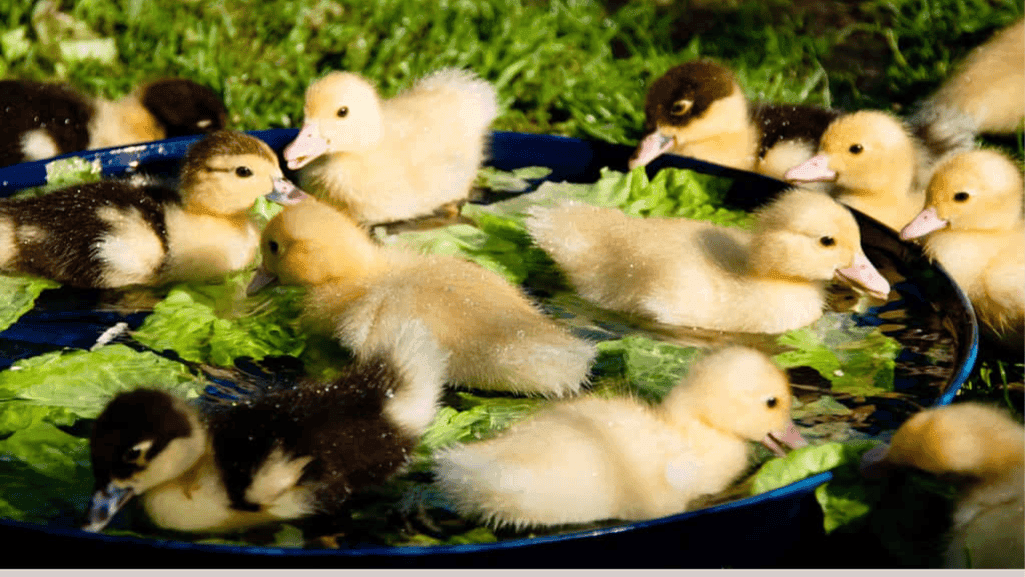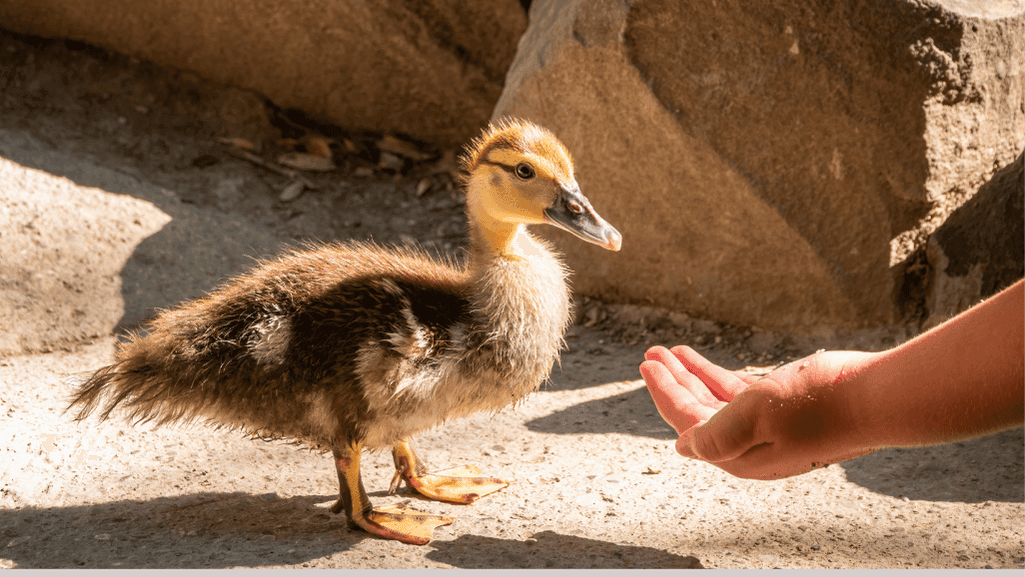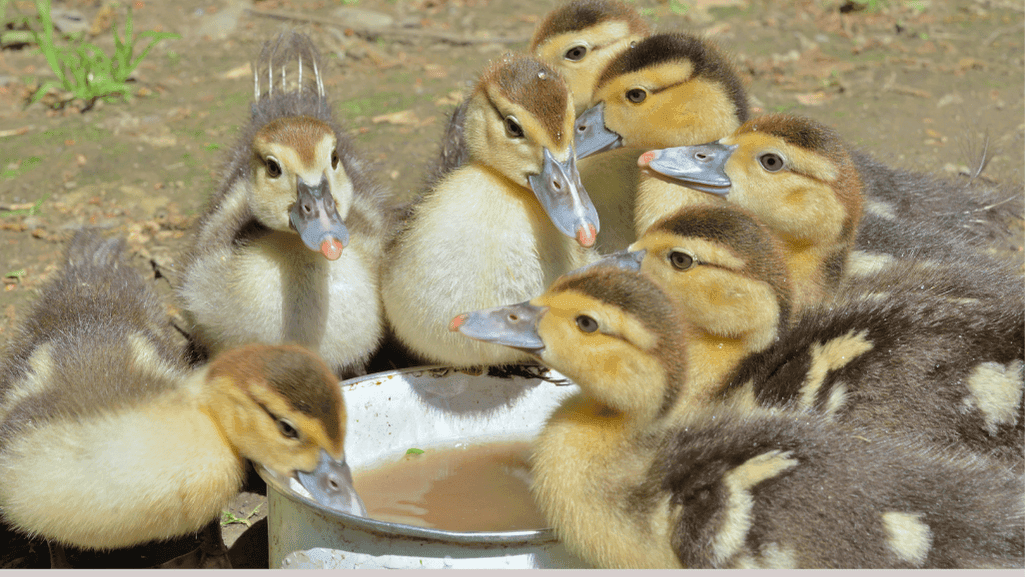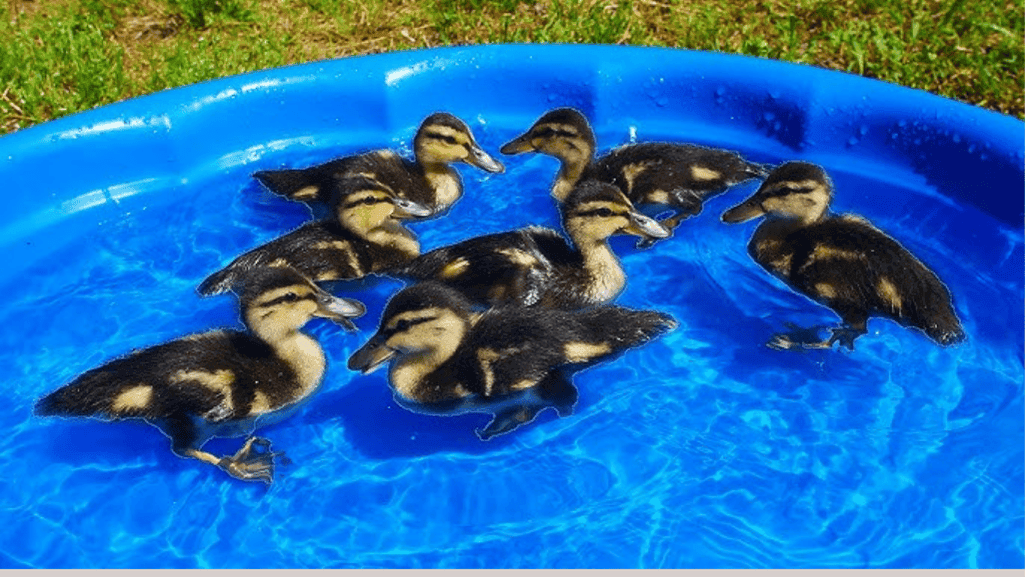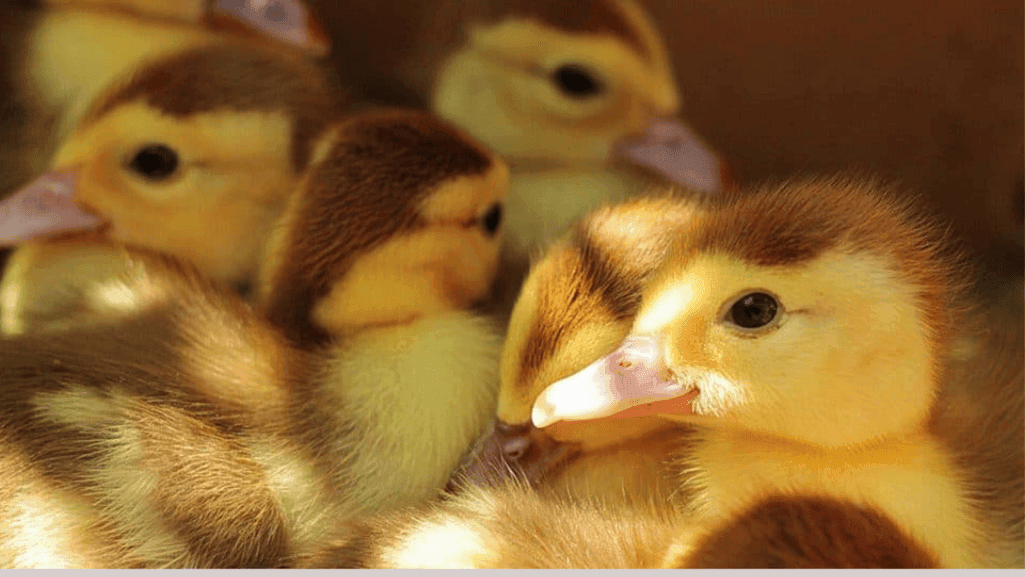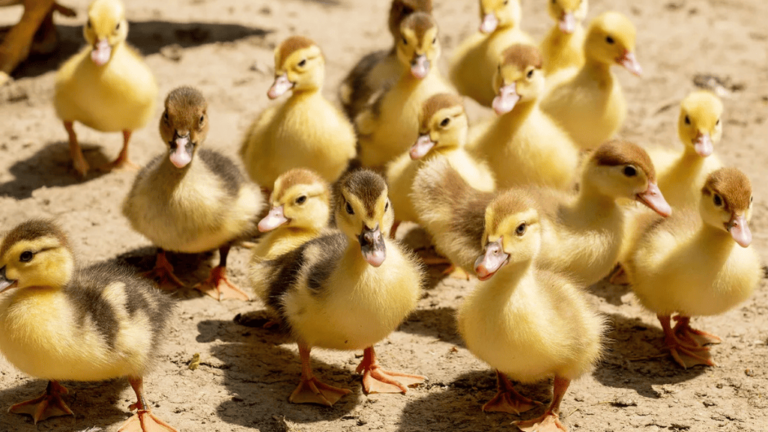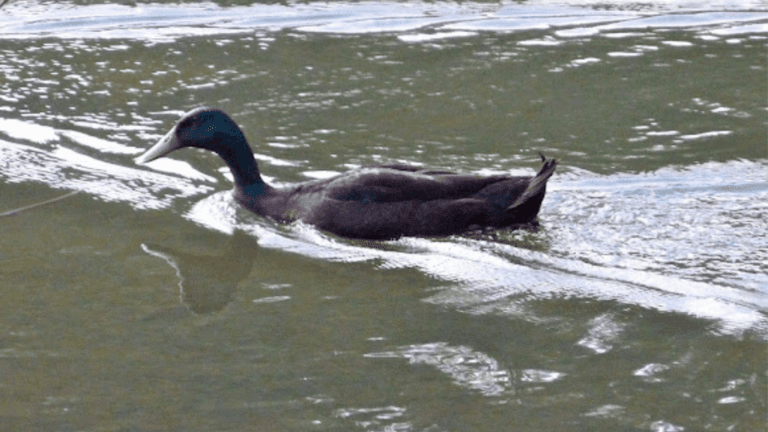Welcome to the enchanting world of newborn ducks! These tiny webfoots, with their fluffy down and endearing peeps, are sure to melt your heart. As you embark on the journey of raising these little quackers, it’s crucial to provide them with the proper care and attention they need to thrive.
Ducklings are delicate creatures that require a warm and safe environment to grow into healthy adult ducks. In their first week of life, the brooder temperature should be maintained at a cozy 90°F to ensure their comfort. As they develop, gradually decrease the temperature by about 1 degree per day, allowing them to adapt to their surroundings.
While it may be tempting to let your downy chicks splash around in water, it’s essential to wait until they are at least four weeks old before introducing them to swimming. However, to keep their nasal passages moist and healthy, provide them with a shallow dish of water where they can dip their feet and bills.
As your baby waterfowl grow, they will need a nutritious diet to support their rapid development. For the first two weeks, feed them a 21%-22% protein chick starter supplemented with niacin. From two weeks to around six months, switch to 16%-18% chick starter crumbles, still including the niacin supplement. Watch in awe as your yellow fuzzballs transform into beautiful adult ducks in just eight short weeks!
Key Takeaways
- Maintain a brooder temperature of 90°F in the first week, decreasing by 1 degree per day as ducklings grow.
- Wait until ducklings are four weeks old before letting them swim, but provide a shallow dish for dipping feet and bills.
- Feed ducklings a 21%-22% protein chick starter with niacin for the first two weeks, then switch to 16%-18% chick starter crumbles with niacin until six months of age.
- Keep the brooder and water areas clean to prevent the spread of Salmonella germs.
- Enjoy watching your fluffy hatchlings grow into full-sized ducks in just eight weeks!
Setting Up the Perfect Duckling Brooder
Creating a cozy and comfortable brooder is key for raising healthy ducklings. When setting up your duckling brooder, consider these important aspects. They will help your ducklings thrive in their new home.
Choosing the Right Container
Choose a large container for your duckling brooder. A large plastic storage bin or a traditional chicken brooder with good airflow works well. Make sure it has at least three square feet of space per duckling. The brooder should be at least 18 inches high with a top to prevent escapes and ensure ventilation.
Providing Proper Bedding
Use absorbent materials like puppy pads in the brooder. These soak up water and droppings. Then, cover the pads with straw or fresh pine shavings for a cozy bed. Ducklings can easily trample hay, so choose your bedding wisely. Always change the bedding regularly to keep the environment clean and dry.
Maintaining Optimal Temperature
Ducklings need supplemental heat in the brooder. You can use a heat lamp or a safer option like the Eco-glow heating plate. Start with a temperature of 90°F for the first week and then decrease it by about 1 degree per day. Use a thermometer to check the temperature and ensure it’s just right. Ducklings will huddle at the far end if it’s too warm and under the heat source if it’s not warm enough.
Pro tip: Ducklings run warmer than chicks and stop huddling under their heat source sooner, so keep a close eye on their behavior to gauge their comfort level.
By following these guidelines and creating a well-designed brooder, you’ll give your ducklings a safe and nurturing place. This will help them grow and develop healthily. Stay tuned for more tips on feeding, watering, and socializing your adorable little ducklings!
Feeding Your Fluffy Nestlings
Starting to care for your newborn ducks is exciting. It’s key to know what they need to eat to grow strong and healthy. We’ll show you how to pick the right food, add niacin, and introduce greens and treats.
Selecting Appropriate Duckling Feed
Choose a high-quality duckling starter feed or non-medicated chick starter feed. These feeds have the right nutrients and protein for your ducklings to grow fast. Make sure it’s made for waterfowl, as ducklings need different nutrients than chicks.
Baby ducklings need starter feed for the first two weeks, unlike chicks who need it for eight weeks. They can eat as much as they want, as they digest food quickly. Feed them at least three times a day, but don’t worry about a strict schedule.
Supplementing with Niacin
Ducklings need extra Vitamin B, especially niacin, for their bones and bills. Add a niacin supplement to their diet. Brewer’s yeast is a great choice, as it’s full of niacin and can be mixed into their feed.
If the starter feed has too much protein, add uncooked rolled oats to balance it. This helps prevent angel wing. Also, give them grit if they don’t have grass to eat.
Introducing Greens and Treats
At two weeks old, you can start adding greens and treats. Frozen peas are a tasty and healthy treat. Give them these treats at the same time every day to make mealtime fun.
Remember, don’t give too much fruit, as it can cause diarrhea in ducklings.
Raising ducklings is a rewarding journey that needs dedication and care. Proper nutrition is key for a healthy flock. Watching your ducklings grow will fill you with pride and joy. For more tips on raising ducks, visit Ducks’ New World.
Ensuring Clean and Fresh Water
As a dedicated duck parent, it’s key to keep your ducklings’ water clean and fresh. They need water to stay hydrated and keep their nasal cavities moist. They also need water to bathe and stay clean and healthy. With a few simple tips and the right equipment, you can make sure your ducklings always have the water they need.
Choosing the Right Waterer
When picking a waterer for your ducklings, think about their age and how many you have. For up to five ducklings under two weeks, a quart-size chick fount works well. But as they grow, you might need a gallon fount to keep up with their drinking needs. Ducklings drink a lot, so be ready to refill their water often or use multiple water sources.
Keeping Water Clean and Accessible
To avoid spills and keep the area clean, put the waterer on a round cookie sheet or plastic houseplant tray. Or, use a paint tray covered with chicken wire for a stable water source. It’s important to clean the brooder and change the water at least once a day. This ensures your ducklings have fresh, clean water to drink and bathe in.
A clean and well-maintained water source is the foundation of a healthy and happy duckling’s life.
By following these guidelines and choosing the right waterer, you can create a caring environment for your ducklings. Remember, your ducklings depend on you for their care. So, make sure they always have access to clean and fresh water. Watch them thrive under your loving care.
Creating a Safe and Comfortable Environment
When caring for newborn ducks, a safe and comfy space is key. Place a soft, washable stuffed animal in their brooder. This will give them comfort and security, helping them feel at home.
Introducing ducklings to swimming is exciting, but wait until they’re a week old. Make sure the water is shallow so they can touch the bottom. Young ducklings tire easily and can drown in deep water.
Watching your ducklings swim is crucial until they’re 5-6 weeks old. At this age, they develop oil in their feathers that keeps them afloat. Always keep an eye on them to ensure their safety and fun.
Ducklings need a heat lamp for the first few weeks. Start with 90°F (32°C) and lower it by a few degrees each week. Watch for signs of overheating like panting or dropping wings, and adjust the temperature to keep them comfortable.
Ducklings bring joy and wonder to our lives with their playful antics and adorable personalities. By creating a safe and nurturing environment, you lay the foundation for them to thrive and grow into the magnificent creatures they are meant to be.
Raising ducklings is a heartwarming journey. Every step you take to ensure their safety and comfort is an investment in their future happiness. With your loving care, your ducklings will grow into delightful and cherished family members.
Socializing and Bonding with Your Ducklings
Building a strong bond with your ducklings is key for their happiness and health. Spending time on socializing and bonding activities helps create a lasting connection. With 5.9K shares of a popular article on bonding with ducklings, many duck lovers want to know how to connect with their fluffy friends.
Handling and Cuddling
One of the joys of raising ducklings is cuddling them. When they’re young, they love to be close to you. Hold and cuddle them often, especially before they’re 4 weeks old.
Experts say early and regular interaction helps build a strong bond. Hold, cuddle, and treat them from the start. Each duck is different, so be patient and respect their likes and limits.
Introducing Toys and Enrichment
Ducklings are curious and love to play. Toys and enrichment items keep them happy and mentally sharp. Try soft balls, floating bath toys, and foraging mats that are safe for ducks.
Playtime with ducklings is not only entertaining for you but also crucial for their development and well-being.
Offering treats and encouraging foraging adds to their fun. Hide small veggies or fruits for them to find. Treats at the same time each day can make them associate you with good things.
Remember, bonding with ducklings takes time, patience, and love. By spending time handling, cuddling, and enriching their lives, you’ll create a beautiful bond with your feathered friends.
Monitoring Health and Development
Welcoming newborn ducks into your home is a joy. It’s key to watch their health and growth closely. A healthy duckling will have bright eyes, soft feathers, and be full of energy and curiosity.
Signs of a Healthy Newborn Duck
When your ducklings arrive, observe them carefully. A healthy duckling will have:
- Bright, alert eyes
- Soft, clean, and fluffy down feathers
- An active and curious nature, exploring their surroundings
- A steady, upright stance with no signs of limping or weakness
- Regular eating, drinking, and preening habits
Ducklings need care and feeding during the day. They should eat, drink, preen, and sleep every hour. Make sure they always have fresh water and a balanced diet.
Common Health Issues and Prevention
Raising ducklings is a joy, but knowing about health issues is important. Niacin deficiency can cause leg problems. Make sure their feed has enough niacin or add dried brewer’s yeast powder to their diet.
Angel wing is another issue, caused by too much protein in their feed. Switch to duck and goose growers pellets by 3-4 weeks to prevent it. Avoid high protein starter crumbs after 4-5 weeks.
Splay leg can happen on slippery surfaces. Use non-skid bedding like rubber shelf liner or textured mats. Also, keep them dry until they’re waterproof at 5-6 weeks old.
Remember, ducks can carry salmonella. Always wash your hands after handling them or cleaning their brooder to stay healthy.
By watching your ducklings’ health and development, you can ensure they live a happy, healthy life. Provide a balanced diet and take preventive steps for a joyful future.
Preparing for the Transition Outdoors
As your ducklings grow, they’ll get ready for the outdoor transition around 7-9 weeks old. This step is key for their growth, letting them explore and act naturally. It’s important to prepare them for the new surroundings and temperatures.
Gradual Acclimation to Outdoor Temperatures
Gradual acclimation to outdoor temperatures is crucial for a smooth outdoor transition. Ducklings grow fast, so they can go outside sooner than chicks. Start by lowering the brooder temperature by 5 degrees each week until they’re fully feathered. This helps their bodies adjust to the new temperatures.
Ducklings are messy, and their splashing can make their space damp. Use pelleted bedding to absorb moisture and keep things clean. Also, make sure they have water for head submersion to keep their nostrils clear and mucous membranes moist.
Providing a Secure Outdoor Enclosure
When your ducklings are ready for the outdoors, give them a secure enclosure that’s predator-proof. A good coop and run will protect them while they explore. Use straw bedding for warmth and comfort. Ducks love to swim, so a safe swimming area is essential.
Watching our ducklings take their first steps into the outside world was a truly rewarding experience. Seeing them splash around in their little pool and forage for treats in the grass brought so much joy to our family. With proper preparation and a secure environment, the outdoor transition can be a smooth and exciting process for both ducklings and their caretakers.
As you start this journey with your ducklings, keep an eye on their health and well-being. For more detailed information on rearing ducklings, check out the comprehensive rearing instructions provided by experienced duck enthusiasts. With love, care, and a well-prepared outdoor space, your ducklings will thrive, bringing joy and wonder to your life for years to come.
Conclusion
Raising newborn ducks is incredibly rewarding. It brings joy and companionship into your life. By creating a nurturing environment and providing the right food, you help them grow well.
Start with a diet rich in protein but gradually reduce it as they get older. This prevents health issues like angel wing and leg problems. Also, let them forage for grass, weeds, and bugs. This not only helps them but also saves on food costs.
As they grow, make sure they have a safe outdoor space. This should protect them from predators and harsh weather. Watch their behavior and give them chances to explore and play in water.
Whether for farming or as pets, always put their well-being first. With love, knowledge, and dedication, you can overcome any challenges in caring for newborn ducks.
Seeing your ducklings grow into healthy adults is incredibly fulfilling. You’ll know you helped them thrive. Enjoy the journey and the special bond you’ll share with these wonderful creatures.


